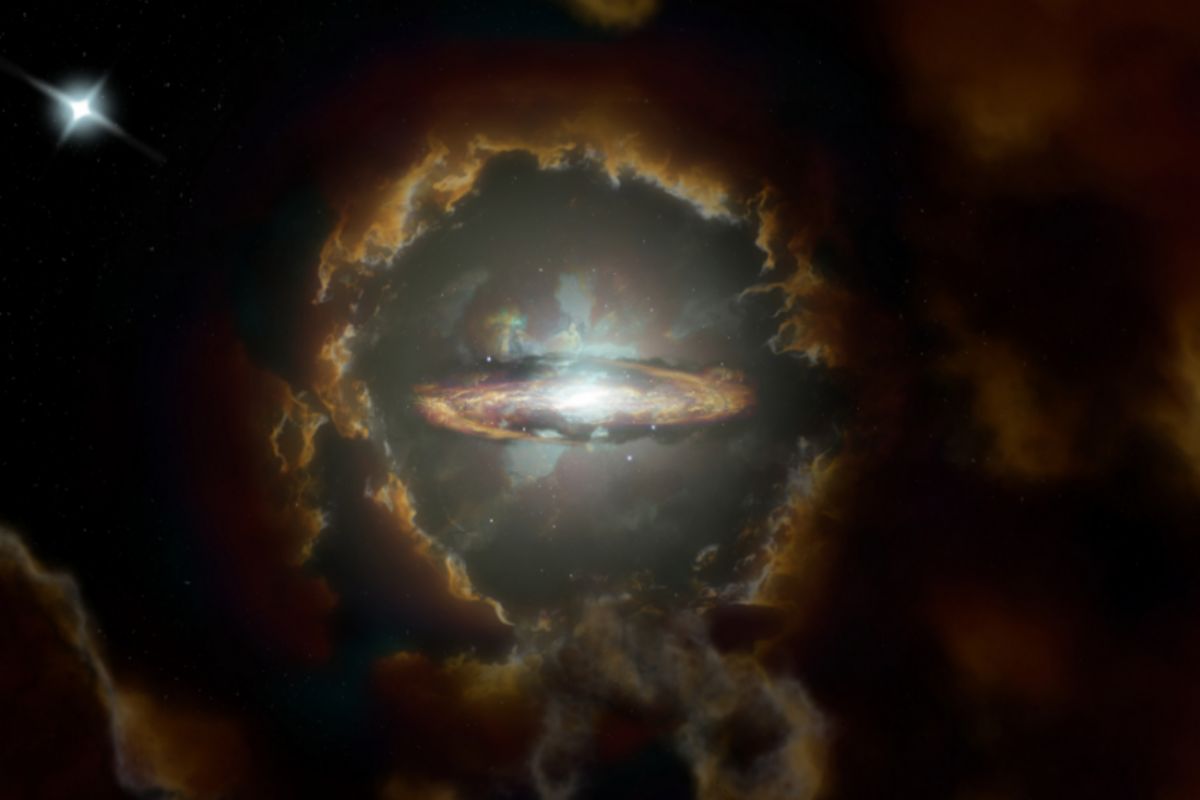- Astronomy They discover a new neighboring galaxy, 'a fossil' of the Universe 30 million light years away
- The closest they discover an invisible black hole 1,000 light years from Earth
The cosmological account of how the universe was formed is changing thanks to the observations of the increasingly sophisticated telescopes, which allow us to go back more and more in time. A team of scientists today offers another example. They have discovered a galaxy with a very massive rotating disk that formed just 1.5 billion years after the Big Bang (or, what is the same, when the universe was very young and was 10% of its current age) .
This is a much earlier stage than the galaxy formation model previously estimated, questioning existing theories on how and when these disk galaxies were formed, including ours, the Milky Way.
The universe was born about 13.8 billion years ago, and cosmologists believe that most galaxies that are like ours formed gradually, gradually growing to a large size. That is why the finding that a team of astrophysicists presents in the journal Nature has been so surprising . Using the ALMA radio telescope located in Chile, they have found a galaxy with a very massive rotating disk (equivalent to 72,000 soles like ours) that, against all odds, was born about 12.5 billion years ago, at a stage too early to be so developed , according to the existing theories until now.
Nicknamed the Wolfe Disc in homage to astronomer Arthur M. Wolfe and first captured by the ALMA radio telescope in 2017, the galaxy DLA0817g rotates at 272 kilometers per second, a speed similar to that of the Milky Way galaxy.
Observations made so far suggested that such massive galaxies originated 2.5 billion years later from the time DLA0817g originated, which was discovered while scientists were examining light from a very distant quasar. The light of the quasar was absorbed when it passed through the large cluster of hydrogen that surrounded this galaxy, and that allowed us to know its existence.
"This galaxy has been studied by ALMA for a few years. The new observations now reveal to us that, despite its youth, the galaxy contains a very well-built rotating disk . Its characteristics and its speed of rotation are not very different from those of the current Milky Way. This is surprising, since ours is a highly evolved galaxy, which has already had enough time to form a well-ordered disk, "explains Rafael Bachiller, director of the National Astronomical Observatory, to this newspaper.
"We have realized that rotating disk galaxies are not as rare as we thought and there must be many more," said Marcel Neeleman, a scientist at Germany's Max Planck Institute for Astronomy and a leader in research.
As Bachiller explains, "it is thought that, in the early evolution of the universe, collisions between smaller galaxies must have played a very important role in the formation of larger galaxies like ours. For this reason, galaxies like the Milky Way, in The initial moments of their formation should appear as several amalgamated minor galaxies, without having completely merged. By observing such a well-structured disk just 1,500 years after the Big Bang, our collision theories are questioned, "he says. Bachelor.
As a possible explanation, the astronomer points out that "perhaps the accretion processes are much faster and more efficient on relatively large scales, which would allow well-structured galaxies, like this one, to be formed in relatively short periods of cosmic time."
" There is more and more evidence that after the Big Bang everything happened very quickly. That is, that the physical processes that took place in the early universe determined, relatively quickly, the characteristics of stars and galaxies as we see them today in the local universe. It seems that the universe did almost all of its work quickly in those first moments and that, since then, the cosmic evolution has passed without great frights, "he reflects.
In accordance with the criteria of The Trust Project
Know more- Science and health
- science
FutureScience is not a game: why 'junk papers' are a danger to the fight against the coronavirus
By 2070, a third of the world's population will live in areas as hot as the Sahara
Astronomy Detect a fireball flying over Spain at 82,000 km / hour

